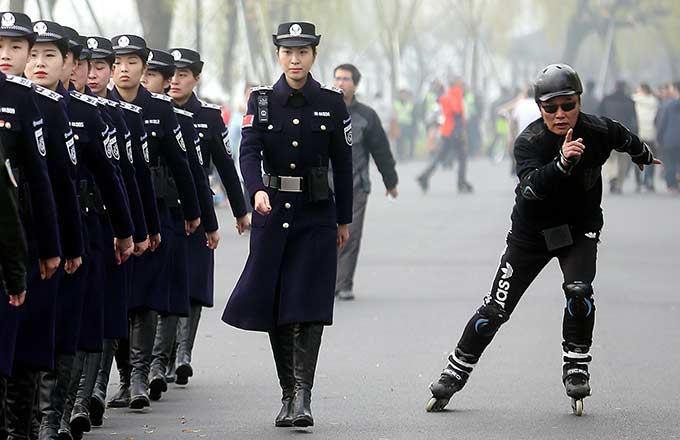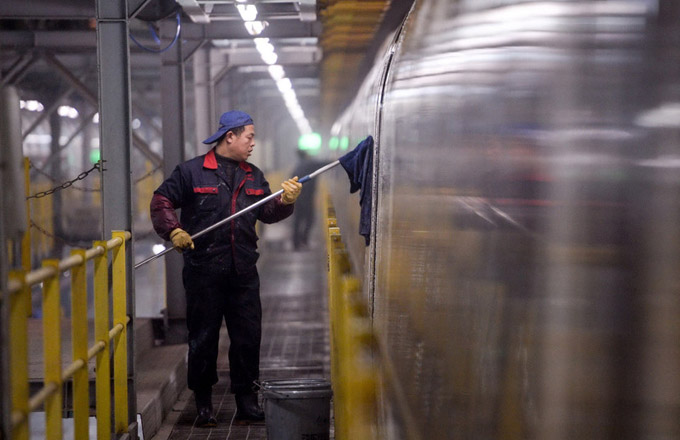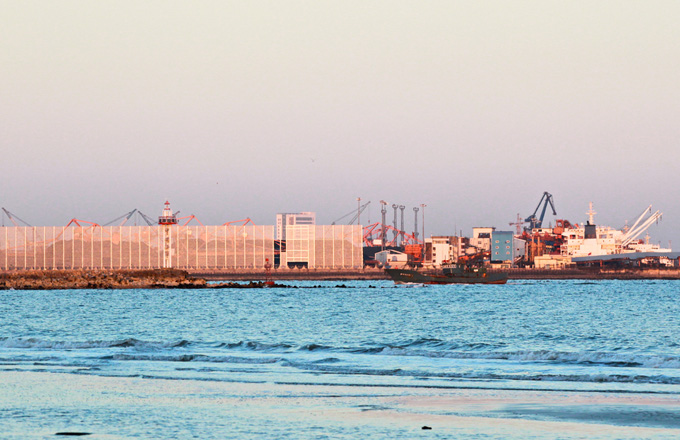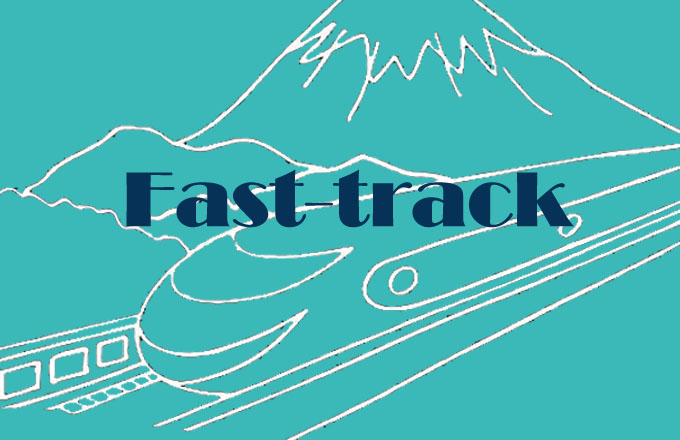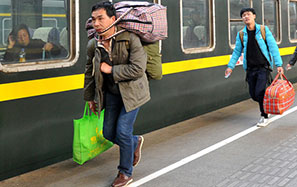The right side of the tracks
Wang Jinda is an experienced bullet train driver. However, the 34-year-old stands out from his coworkers because he has experience of operating many different types of trains, such as diesel locomotives, electric locomotives and bullet trains.
"I am lucky to have experienced the leap forward in China's railway development and driven different types of trains," he said.
Wang, who has worked as a train driver since 2001 when he was 19, is following in a family tradition; his mother and grandfather both worked on the railway in Yunnan province in Southwest China.

His grandfather worked for the Yunnan-Vietnam Railway, which was built by France between 1904 and 1910 to connect Haiphong in Vietnam with Kunming, the capital of Yunnan, to expand the trading network and facilitate the importation of European goods.
Because the railway was built by the French, the engineers laid a 1,000-millimeter-wide track, the standard in France at the time, making it the only mainline in China to use the narrow-gauge system.
"My family is so proud that I was able to become a bullet train driver, and I am so proud of my job," said Wang, who was selected for training last year.
In July, he drove one of the trains during a test run on the Yunnan-Shanghai high-speed railway, attaining a speed of 330 km per hour, a provincial record.
The complex geological features in the province mean that Yunnan and the Tibet and Ningxia Hui autonomous regions are the only areas of the Chinese mainland that have yet to join the high-speed rail network.
On Dec 28, two major high-speed lines opened to link Kunming with Shanghai and Guangzhou, Guangdong province, and Wang drove the first bullet train from Kunming to Guiyang, the capital of Guizhou province.
From the old 1,000-mm-gauge railway to the new high-speed railway, Wang has witnessed the changes in Yunnan's rail network. Now, he hopes to see the high-speed service bring more tourism and business opportunities to his hometown.
"Now it (Kunming) is becoming a transportation hub linking Southern Asia and Southeast Asia," he said.
The 2,252-km-long Shanghai to Kunming line, which crosses five provinces - Zhejiang, Jiangxi, Hunan, Guizhou and Yunnan - cuts the journey time between Shanghai and Kunming to just 11 hours from the previous 34.






